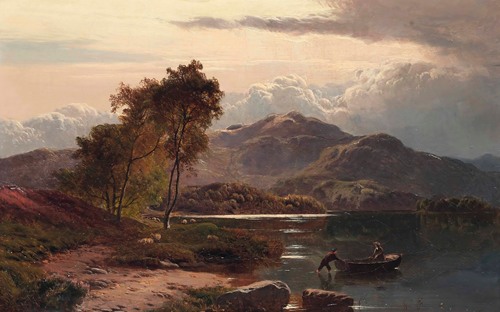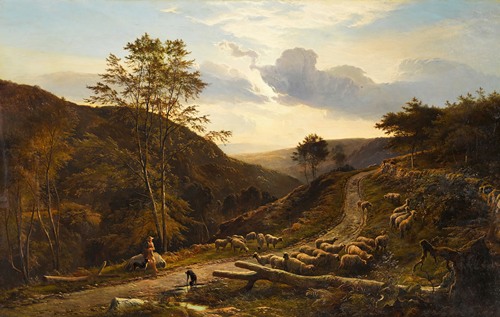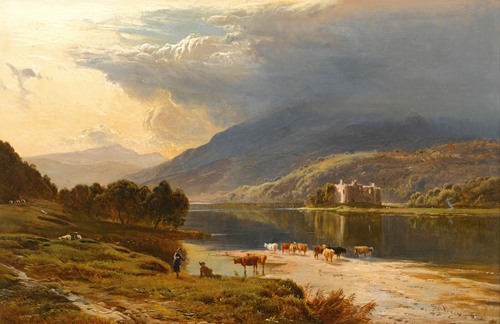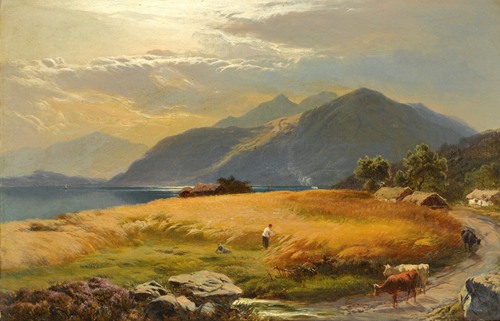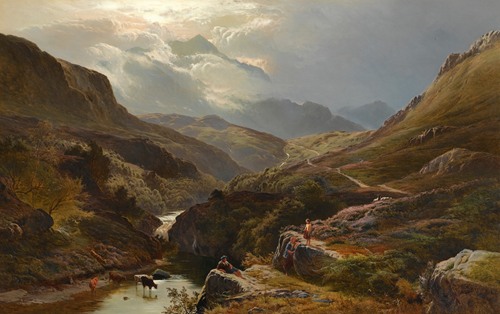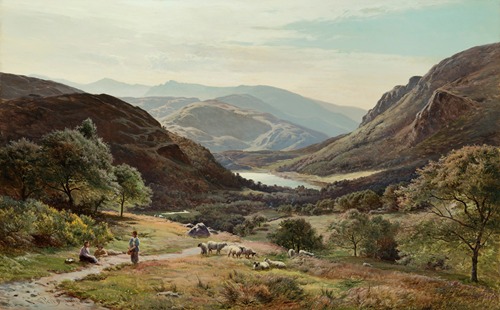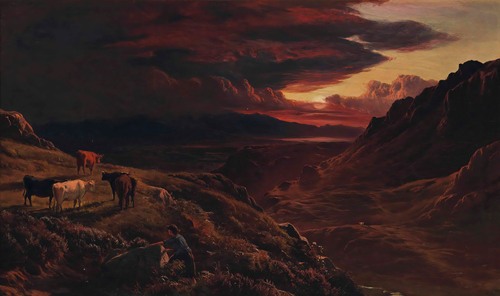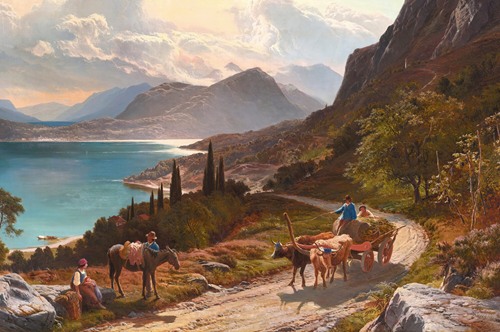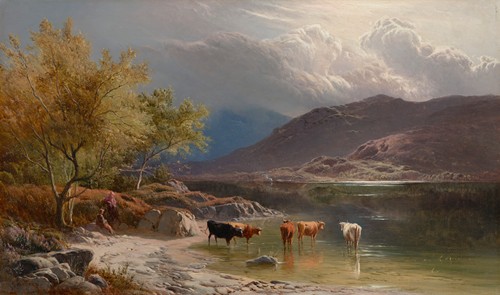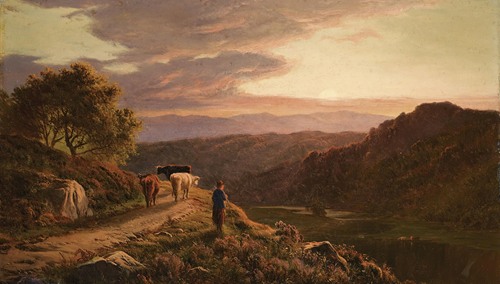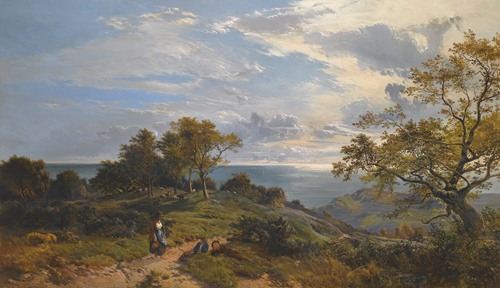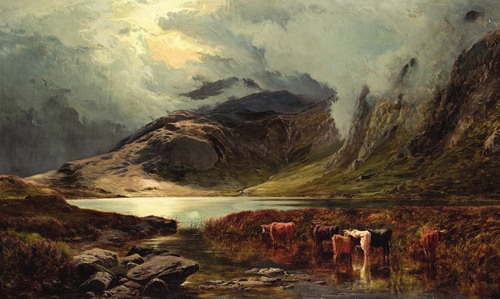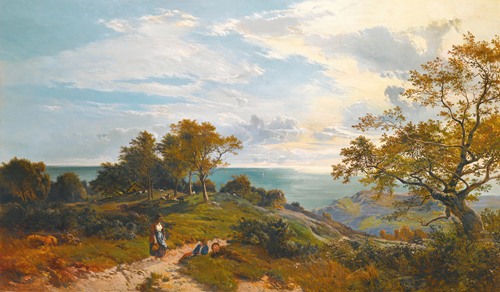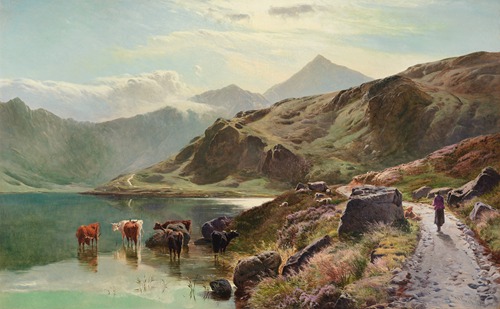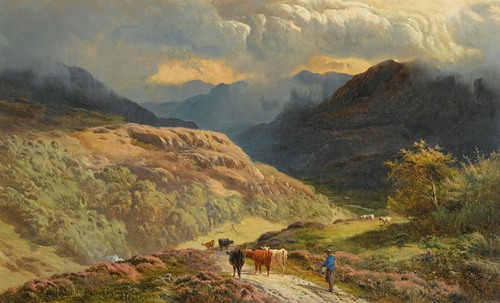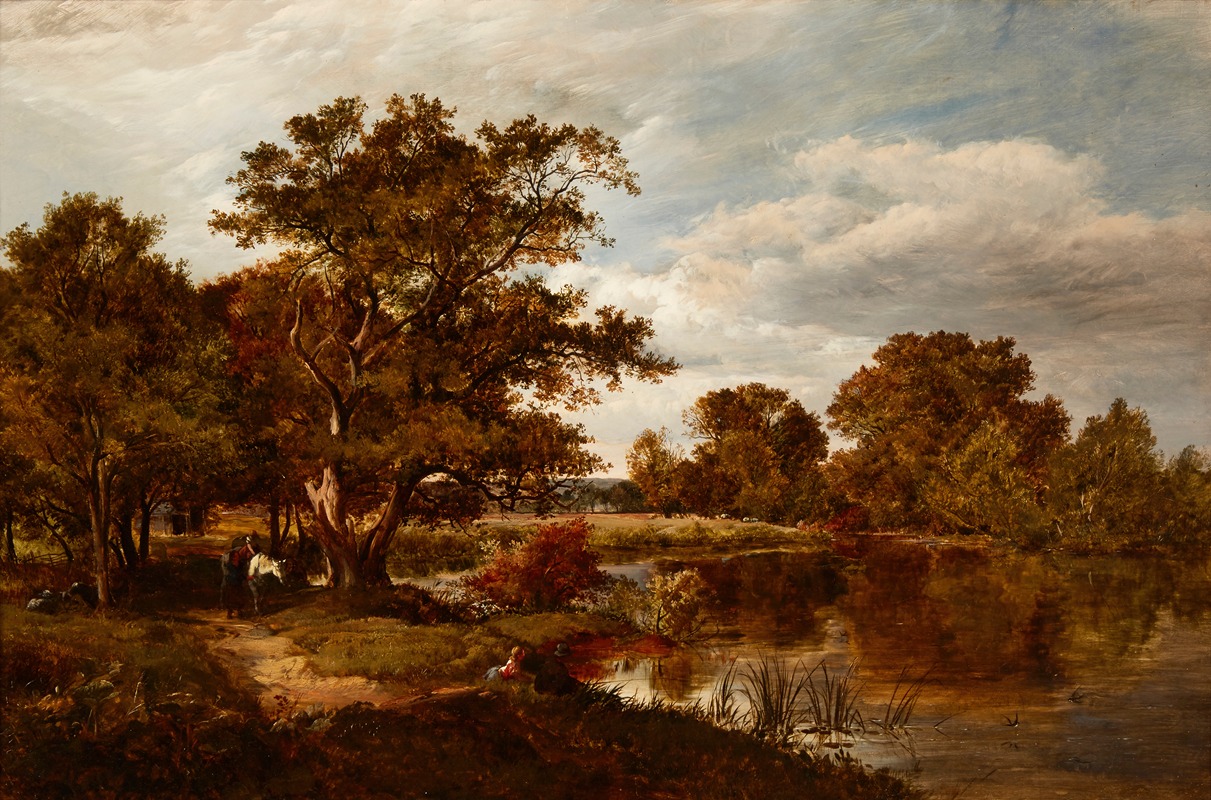

Sidney Richard Percy was an English landscape painter during the Victorian era, and a member of the Williams family of painters.
Sidney Richard Percy was born Sidney Richard Percy Williams on 22 March 1822 in London. He was the fifth son of the painter Edward Williams (1781–1855) and Ann Hildebrandt (c.1780-1851), and a member of the Williams family of painters, who were related to such famous artists as James Ward, R.A. and George Morland. His father was a well-known landscape artist, who taught him how to paint; otherwise he received no formal instruction. Although his early paintings were signed "Sidney Williams", he used the name "Percy" from the age of 20 onwards to differentiate himself from the other artists in his family. Starting in 1842, he exhibited at the Royal Academy (65 works), the British Institution (48 works), and the Suffolk Street Gallery of the Society of British Artists (67 works). He also exhibited in many of the lesser-known Victorian art venues as well.
His early years were spent in or near the artist's quarter of Tottenham Court, before moving about 1846 with his family to Barnes on the outskirts of London. Here he lived and worked with his father and brothers in a communal artist setting in a large house with a studio that they shared at 32 Castelnau Villas. Barnes today is part of the urban sprawl of London, but much of it was rural countryside in Victorian times. Situated close to the Thames River, there were quiet marshes beneath windmills, farms where horses pulled plows, and wheel-rutted dirt roads running past country inns or through shaded glens. These were the scenes that the Williams brothers captured on canvas during their early years as painters, but as Sidney Richard Percy matured as a landscape painter he increasingly sought his inspiration in Northern Wales, Devon, Yorkshire, the Lake District and Skye.
He moved after his 1857 marriage to the Florence Villas on Inner Park Road in Wandsworth, Surrey, and then moved his family about 1863 to Hill House in the village of Great Missenden, Buckinghamshire. Hill House was well placed for painting forays into the English countryside, situated as it was across from the Misbourne Valley. He was extremely popular during these years, which brought him sufficient income to indulge the extravagant tastes of his wife, which included a carriage and several servants.
Percy traveled in 1865 to Venice with his friend and neighbor the water colour artist William Callow (1812–1908), and returned visiting Switzerland and Paris. Although war between Prussia and Austria in 1866 put an end to these travels, he returned home to ample artistic inspiration in the Welsh countryside, where he spent many days painting in and around the villages of Llanbedr and Arthog, on either side of the Mawddach estuary in Merioneth. He also made painting forays to the Scottish Highlands.
He spent his final years at 34 Mulgrave Road in Sutton, Surrey, where his knee was injured when he was thrown from a horse in a riding accident. When his leg had to be amputated as a consequence, he died prematurely on 13 April 1886 at his home of a heart attack due complications from the operation. He was buried at Beckenham Cemetery in Kent. Though once quite wealthy, his finances at the time of his death were no longer robust, and his widow had to be supported in her final years by her son-in-law.
